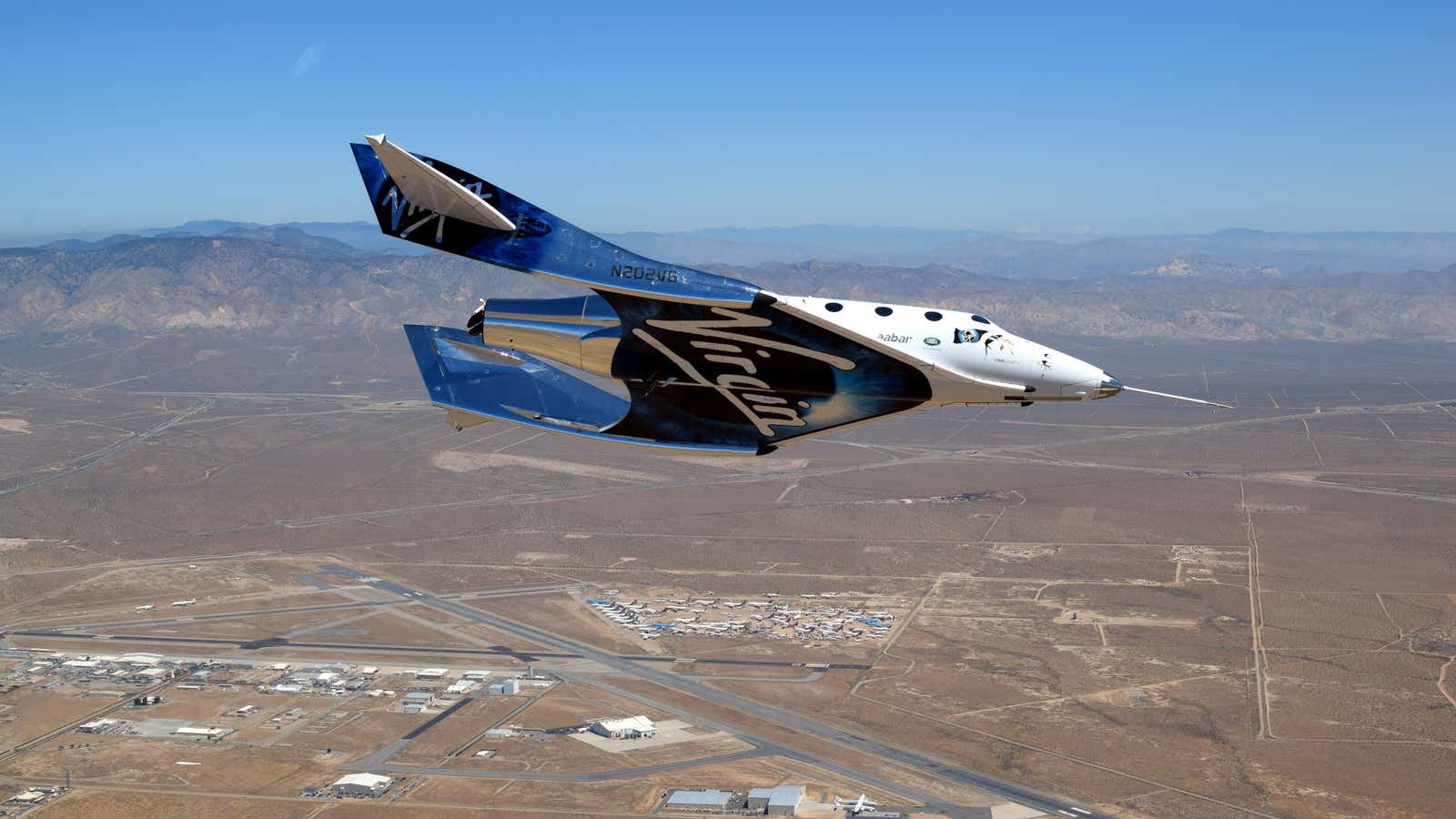Virgin Galactic, the space-tourism company backed by Richard Branson, sent two astronauts into space, the first people to make the trip from American soil since the last Space Shuttle flight in 2011.
The launch is the first time in 14 years of work, marked by big promises, tragic losses, and resilience, that the company has carried humans into space. The flight also carried experimental payloads for NASA.
The vehicle, called VSS Unity, reached a maximum altitude of 82.68 km (about 54 miles) during the 16 minute flight.
Traditionally, 100 km has been considered the edge of space. However, the US Federal Aviation Agency (FAA) and the US Air Force have long used 80 km as their measuring point, and recent scholarship suggests that 80 km is more accurate.
The two veteran test pilots onboard, C.J. Sturckow and Mark Stucky, will be awarded FAA astronaut wings; Sturckow had already flown to space as a NASA space shuttle astronaut.
The VSS Unity is a rocket plane, a kind of vehicle that has a rocket engine but also aerodynamic surfaces to generate lift in the atmosphere. It is released from a carrier aircraft just over 13 kilometers (eight miles) into the air, then fires its engine for a minute to accelerate to 2.9 times the speed of sound and escape the Earth’s atmosphere. After it reaches its furthest possible distance away from Earth, it glides back to the planet and lands on a runway.
The vehicle, a design called SpaceShipTwo, is based on SpaceShipOne, which was developed by Scaled Composites in 2004 and helped the company win the $10 million Ansari X Prize and become the first private organization to take a human to space. Though it is designed to only perform short hops to edge of space, carrying passengers or experiments requiring a few minutes of access to microgravity, today’s flight makes Virgin Galactic just the second private organization to carry passengers into space.
Next year, Boeing and SpaceX hope to become the first private companies to carry humans into orbit by flying astronauts to the International Space Station for NASA, a much larger engineering challenge. Blue Origin, Jeff Bezos’ space company, has also developed a suborbital space-tourism rocket called New Shepard, but it has yet to carry humans into space.
Virgin Galactic will need to make further successful trial runs with SpaceShipTwo before it begins carrying anyone other than test pilots, but the company hopes the vehicle will carry seven passengers on regular tourist flights, and already has a manifest of very patient and wealthy customers who put down $250,000 deposits.
Branson has said he and his family will be among the first customers to fly on a rocket plane tourist jaunt. The company is expected to begin operations from a spaceport in New Mexico, but has hopes to build other sites around the world. Eventually, the company wants to develop vehicles carrying passengers on longer trips, competing with long-haul airliners by offering high-speed suborbital space flights from point to point on Earth.
Virgin Galactic began as a marketing venture for a spacecraft to be developed largely by Scaled Composites and its legendary lead designer Burt Rutan following the success of SpaceShipOne. Technical challenges with the vehicle’s unusual hybrid propulsion system, along with a test accident in 2007 that killed three employees, led to years of delay.
Then, in 2014, the first SpaceShipTwo, VSS Enterprise, broke apart during a test flight, killing one of the pilots, Michael Alsbury. An investigation determined that the spacecraft’s designers made it too easy for a single mistake—in this case, unlocking the vehicle’s rotating wing too early—to destroy the vehicle.
After the accident, a re-organization under CEO George Whitesides allowed the company to start with a new vehicle, firing the rocket motor on Unity for the first time in April and then flying it into space today.
